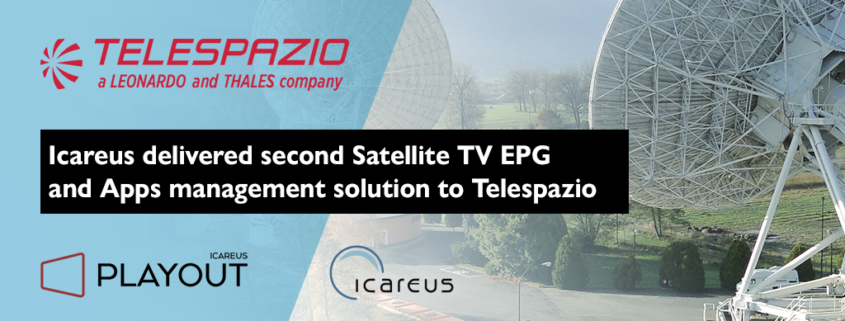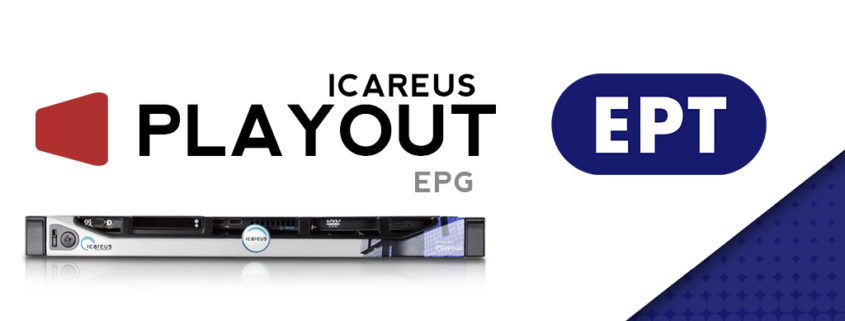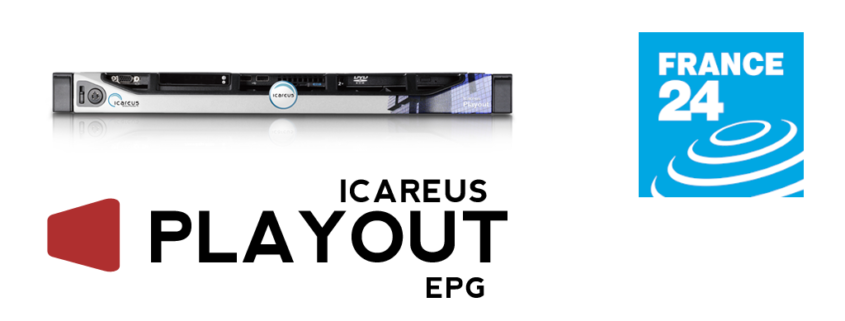Helsinki, 12.09,2023: Telespazio, a global leader in satellite solutions and services, has strategically chosen Icareus as a trusted partner to enhance its broadcasting operations. Recognized as one of the world’s largest suppliers in Satellite distribution, Telespazio’s decision to utilize Icareus’ Playout underscores the exceptional benefits these solutions bring to their operations.
Icareus empowers Telespazio to optimize their EPG and HbbTV content management and distribution processes. The selection of Icareus’ Playout EPG and Carousel management platform equips Telespazio to efficiently manage and distribute critical EPG data and HbbTV applications directly from their Space Centre in Lario, Italy. This not only streamlines their operations but also ensures a seamless and engaging experience for their broadcasters’ audiences.
The enduring partnership between Telespazio and Icareus is a testament to the efficacy of Icareus’ solutions. The collaboration dates back to 2014, when Telespazio initially embraced Icareus’ EPG solution at their Rome Space Centre in Fucino. The longevity of this partnership showcases the consistent value and trust Icareus has delivered to Telespazio over the years.
By leveraging Icareus’ solutions, Telespazio gains a competitive edge in the satellite solutions landscape. The partnership enables Telespazio to deliver content and applications with precision, ensuring a heightened level of user engagement. Moreover, Telespazio benefits from the adaptability and scalability of Icareus’ technologies, enabling them to stay at the forefront of industry trends and technological advancements.
As a result, Telespazio can focus on what they do best – delivering exceptional satellite solutions – while entrusting Icareus to provide the tools necessary to effectively manage and distribute their EPG and applications.
Telespazio is the Italian leader and a major European player in radio and television satellite broadcasting, thanks to its facilities at the Fucino and Lario Space Centres and to the equipment installed and managed at clients’ premises.
Telespazio is over 60 years old company with over 3000 employees around the world and making 220 M€ sales (in 2022). The Lario Space Centre, operational since 1977, is located at the far North of Lake Como, at the town of Gera Lario. The Centre has 40 transceiver and 20 receiver antennas.
As a part of its services, Telespazio provides high quality satellite TV services to its customers including electronic program guide and HbbTV applications management services.
To further improve its services Telespazio needed a best-of-breed EPG solution to manage its customer’s programme information and interactive TV HbbTV applications. As Icareus has been a trusted and reliable vendor for Telespazio for almost a decade, Icareus Playout platform was selected to further develop and manage PSI/SI, EIT, HbbTV signalling, as well as object and datacarousels.
Icareus Playout platform is the leading broadcast solution in the world, selected by main broadcasters and DVB operators in Europe and MENA including Arabsat, Asharq News, Arqiva, BVN, Dialog TV, DU, France24, Freesat, Mediaset, Persidera, Telefonica, Telenet, Telespazio, RAI etc.
Icareus Playout is a modular, secure and robust broadcast platform for managing multichannel and network EPG data. It enables distinctive configuration of EPG data sources, EIT tables, PSI/SI descriptors, and allows even custom configurations.
Icareus Playout allows Telespazio to manage its Electronic Program Guide in a flexible manner to offer a better TV experience to its viewers. Icareus Playout is tightly integrated to Telespazio’s systems to provide a seamless 24/7 fully automated EPG content workflow. In addition to as a part of the delivery is Icareus Playout Carousel, which offers a long list of features including HbbTV DSM-CC object and data carousel support, AIT management for both broadcast and broadband applications, accurate synchronization of hybrid TV applications with the broadcast signal via stream events, flexible descriptor management, and many more.
“We at Icareus highly appreciate our long-lasting relationship and co-operation with Telespazio. We are extremely glad about widening our business relationship with our old customer, with new solution.”

Icareus Playout EPG solution offers Trusted Broadcast Technology enjoyed by leading broadcasters and operators globally for over a decade. Icareus Playout EP110 server is a full-scale PSI/SI generator server targeted for operators and broadcasters to manage their DVB multiplexes and channel line–ups. The tested integrations to multiplexes, EPG data providers, network management systems and Icareus Suite enable quick deployment and high reliability. Icareus global reseller and systems integrator partners offer high service levels and peace-of-mind to our customers.
Icareus Playout product family includes Icareus Playout EP PSI/SI and EPG server, Icareus CS DSM-CC Carousel server for HbbTV and other Interactive TV standards, Icareus Playout SSU server for over-the-air updates and Icareus Playout Compact Lab solution for research, development and testing TV services. Icareus Playout solutions have been deployed in broadcasting production since 2004 is trusted by world leading TV operators and broadcasters serving customers in 50 countries like SES (Luxemburg), Arabsat (UAE), Cyfrowy Polsat (Poland), NovaTV (Czech) Mediaset (Italy).
Icareus Ltd is established 2001 and has a headquarters in Helsinki, Finland. Combining online and broadcast technologies have been the core of our activities over a decade, true pioneers some say. We’ve been making the change from linear TV to today’s multi-screen experience. Icareus’ customizable end-user apps provide unique TV experience with economical service launch and maintenance on any device. Icareus solutions are enjoyed by millions of consumers via our broadcaster, operator, OTT and OVP customers in over 60 countries. Icareus provides cloud solutions for TV and video services and trusted broadcast EPG, Carousel, OTA and Lab head-end products. Our platforms support solutions for HbbTV, OTT, TV Everywhere, Addressable TV advertising and Audience Measurement.
Telespazio is a joint venture between Leonardo (67%) and Thales (33%) and one of the world’s biggest suppliers of satellite solutions and services. The company teams up with Thales Alenia Space to form the parent companies’ Space Alliance, a strategic partnership which offers a complete range of space services.
Founded in Italy in 1961, Telespazio is based in Rome and counts more than 3000 employees through its various subsidiaries and joint ventures. Currently Telespazio has presence in 15 countries and it has 13 companies around the world.
For more Information:
Ms. Jessica Glad
Marketing & Communications
Icareus Ltd
Email: jessica.glad[at]icareus.com
Phone: +358 (0)9 2289 080
Relevant material
Downloads & further reading
Additional materials regarding this article
More information about Icareus Playout EPG generator server solution
Read more about our market leading Icareus Playout EPG generator server solution from our website:
Read more about our market leading Icareus Playout HbbTV carousel streaming server solution from our website:











